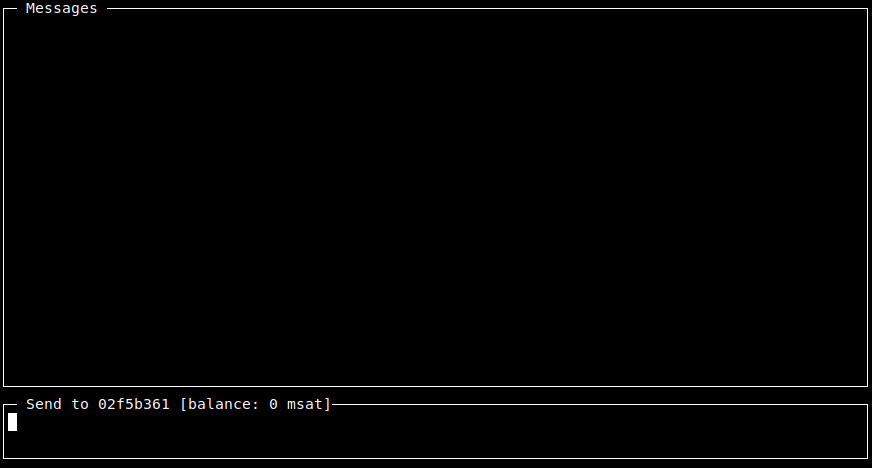Does Private messaging over Bitcoin’s Lightning Network have potential?
Recently one of Lightning Labs developer Joost Jager revealed a proof of concept ‘Whatsat’, a permissionless private messaging built on Bitcoin’s lightning network. Unlike other encrypted messaging apps, Whatsat is a decentralized messaging platform where users own and maintain the infrastructure.
Lightning network currently scales Bitcoin payments and used for micropayments. The following demo demonstrates a new use case for the lightning network as a peer-to-peer private messaging. Using the protocol, users open a channel and start the end-to-end encrypted, onion-routed and censorship-resistant chat.

In future nodes may start charging a prepaid fee and/or start charging after reaching a threshold. As per 1M statistics, currently, the network charges a median of 1 satoshi per transaction. Assuming a user sends 10 messages per day and each message costs 1 satoshi (1 bitcoin = 100 million satoshi), then users pay under 1 dollar per year with the current exchange rate.
Need for Private messaging:
The world needs private messaging where conversations are shielded from government surveillance, cyber attackers and Cambridge Analytica-style data harvesting. With end-to-end encryption, parties sending and receiving messages can only view them. Not even the companies hosting the app (like Facebook) can read its content.
On the other hand, encrypted messaging makes it far more difficult for law enforcement, and the platforms themselves to combat hate speech, harassment, illegal activity and the potentially deadly spread of viral misinformation.
Read more: What is data encryption.
Taunting trobles of encrypted private messaging:
Trump administration is pursuing legislation outlawing end-to-end encryption on American-made messaging apps. The U.S. isn’t the only country. U.K. officials have called upon chat apps to introduce a “Ghost Protocol” which would allow law enforcement to eavesdrop on encrypted chats. Germany is also considering a similar law forcing chat apps to hand over encrypted conversations.
Stakes are even higher in countries with authoritarian regimes. During the recent protests in Hong Kong, organizers seeking to avoid government surveillance turned to Telegram. The encrypted messaging app soon became one of the most downloaded apps in Hong Kong. However, soon its servers were hit by a DDoS attack, a cyberattack known to originate from China.
Better prospects with the decentralized private messaging platform:
Currently, WhatsApp, Kik Messenger, and Snapchat are examples of private messaging tools. Users create and sign up for accounts to connect privately with selected friends. However, they are managed by a central host that can be hit by attackers like in the case of the Telegram or can be brought down if governments outlaw private messaging apps.
Therefore, a new type of messaging platform is needed. A platform where the users themselves own and create the infrastructure to transmit and store the messages, and users themselves are in control of data concerning themselves.
The use of distributed ledger technology fills this need and Lightning network’s developer plans to build ‘Whatsat’, a decentralized messaging platform where users own and maintain the infrastructure.
Challenges faced by Lightning Network:
Note: The technology is still under development and in early days of the network’s evolution.
Introduction: Lightning Network is a second layer to enable off-chain Bitcoin transactions. Meaning verification no longer has to happen on the Bitcoin blockchain for every transaction. The user creates a channel with people or businesses that they transit more often. Doing so allows Bitcoin payments to flow between them off-chain seamlessly with a fraction of cost.
To open a channel, users create a transaction that locks their funds on the Bitcoin blockchain and unlocks them on the Lighting Network. Once established, it’s owners can send and receive money through them. Balance is not recorded on Bitcoin’s blockchain unless one of the two parties closes the channel.

Key problems the lightning network could face for its new use case – ‘private messaging’:
1) Maintaining low fee:
Bitcoin’s congestion is one of several factors that influence its transaction fees. This may affect base fees in the Lightning network. Though the use of private messaging seems appealing but can network manage the low base fee in the future.
2) Sustainability and Decentralization:
Nodes on bitcoin’s lightning network need to be online all the time in order for users to send and receive payments. Going offline creates problems on the Lightning Network. What if the user’s funds are in certain nodes and the node goes offline. This would lock-up user funds for days. In the case of private messaging, the user may lose their communication channel.
Increasing centralization: Apparently one of the mysterious entities known as ‘LNBIG’ in Lightning network, controls nearly 60% of network capacity i.e. of 820 BTC currently capacity, between all the nodes operated by this entity, the entity as of this writing controls approx 500+ BTC.
Source: 1M Top Capacity Nodes statistics.
Given the above challenges, the successful implementation of a private messaging app highly depends if the lightning network matures to a sustainable-decentralized system and fees in the network are low.

